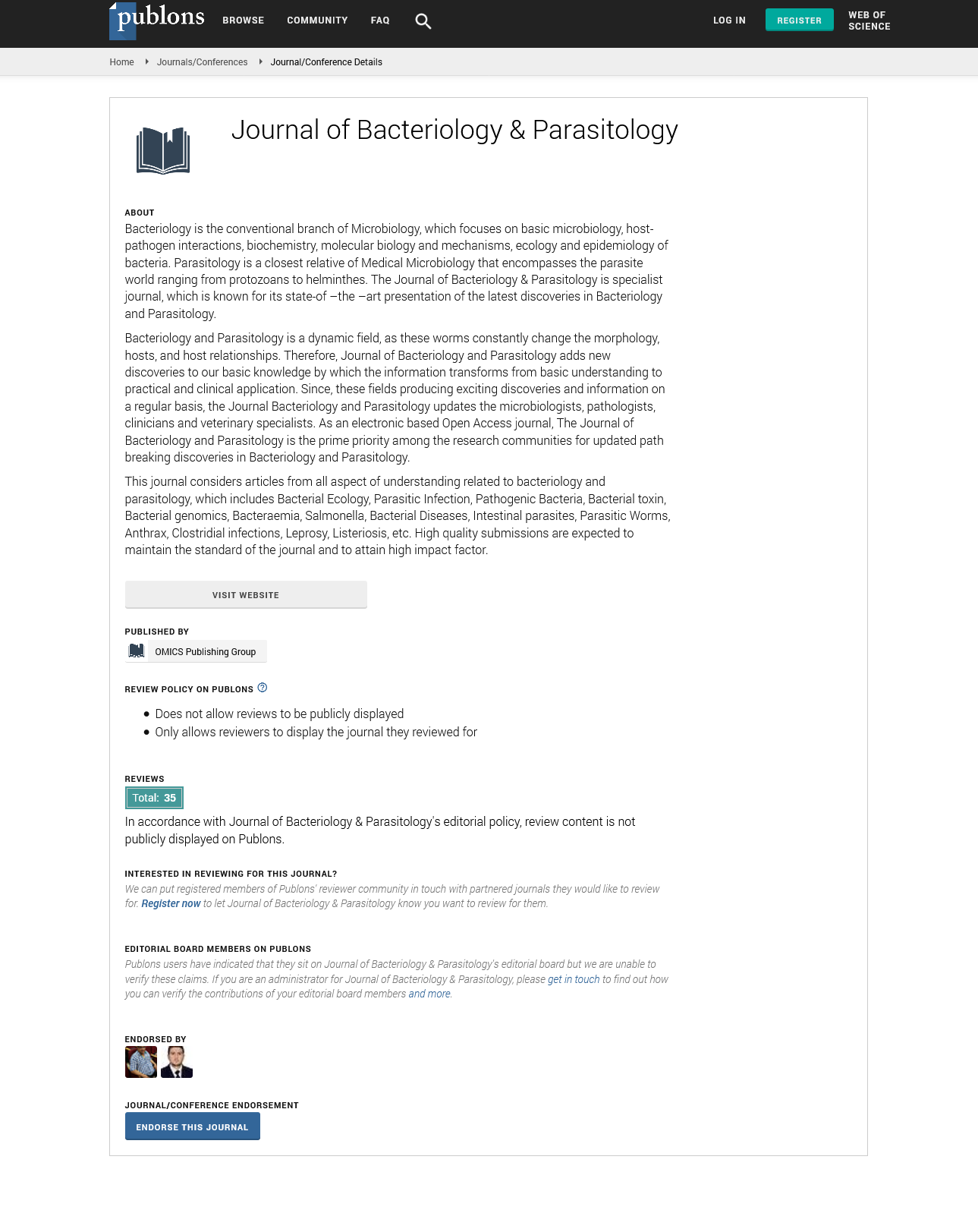Indexed In
- Open J Gate
- Genamics JournalSeek
- Academic Keys
- JournalTOCs
- ResearchBible
- Ulrich's Periodicals Directory
- Access to Global Online Research in Agriculture (AGORA)
- Electronic Journals Library
- RefSeek
- Hamdard University
- EBSCO A-Z
- OCLC- WorldCat
- SWB online catalog
- Virtual Library of Biology (vifabio)
- Publons
- MIAR
- Geneva Foundation for Medical Education and Research
- Euro Pub
- Google Scholar
Useful Links
Share This Page
Journal Flyer

Open Access Journals
- Agri and Aquaculture
- Biochemistry
- Bioinformatics & Systems Biology
- Business & Management
- Chemistry
- Clinical Sciences
- Engineering
- Food & Nutrition
- General Science
- Genetics & Molecular Biology
- Immunology & Microbiology
- Medical Sciences
- Neuroscience & Psychology
- Nursing & Health Care
- Pharmaceutical Sciences
Titanium dioxide and zinc oxide nanoparticles as antibacterial agents against some clinical isolates
7th International Conference on Bacteriology and Infectious Diseases
June 04-05, 2018 Osaka, Japan
Farzana Rashid, Hunaiza Tahir and Iqra Pervaiz
Lahore College for Women University, Pakistan
Posters & Accepted Abstracts: J Bacteriol Parasitol
Abstract:
Background: The emergence of infectious diseases and increased microbial resistance represent a challenge for the scientific community to develop new bioactive compounds. Nanotechnology holds an important area in research due to their smaller size, larger surface area, orientation, and physical properties which make them appropriate to be use in various fields of research. Aim & Methodology: The present study was designed to evaluate the antibacterial effects of titanium dioxide (TiO2) and zinc oxide (ZnO) nanoparticles and their synergestic effect with the beta-lactam antibiotics (imipenem and ciprofloxacin) against the beta-lactamases producing bacteria (Escherichia coli, Pseudomonas aeruginosa and Klebsiella pneumoniae). Minimum Inhibitory Concentration (MIC) was evaluated by the standard agar dilution method. Different concentrations of nanoparticles (0.2 mg/ml, 0.4 mg/ml, 0.6 mg/ml, 0.8 mg/ml, 1.0 mg/ml, 1.2 mg/ml and 1.4 mg/ml) were used to evaluate the antibacterial activity by disc diffusion assay. The cytotoxicity and antioxidant activity of these nanoparticles were also evaluated by Brine shrimp lethality assay and radical scavenging activity. Results: The MIC of TiO2 for E. coli, P. aeruginosa and K. pneumonia was calculated as 0.04 mg/ml, 0.08 mg/ml and 0.07 mg/ ml, respectively while the MIC of ZnO nanoparticles against the above strains was 0.01 mg/ml, 0.015 mg/ml and 0.01 mg/ml. The maximum zones of inhibition were formed at 1.4 mg/ml concentration of nanoparticles. K. pneumoniae showed highest zone of inhibition i.e. 20 and 25 mm with TiO2 and ZnO, respectively. The susceptibility of TiO2 and ZnO against bacterial strains is in order: K. pneumoniae>P. aeruginosa>E. coli. Results also showed that TiO2 nanoparticles were toxic at 1.2 and 1.4 mg/ml concentration while ZnO nanoparticles showed no toxicity. Conclusion: Analysis of results showed that ZnO nanoparticles act as strong antibacterial agent as compared to TiO2 nanoparticles and both nanoparticles showed synergistic behavior with the beta-lactam antibiotics used. dr.farzanarashid@gmail.com

